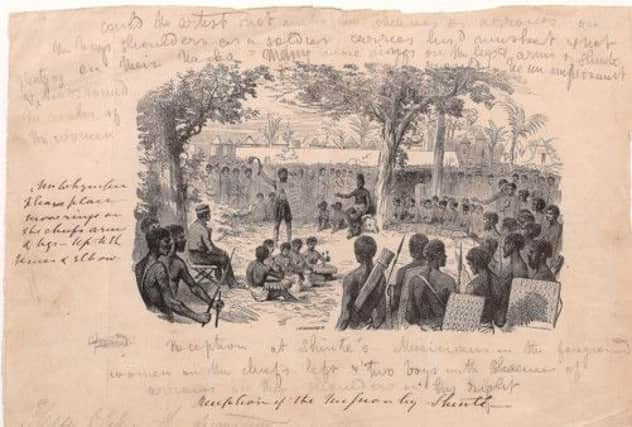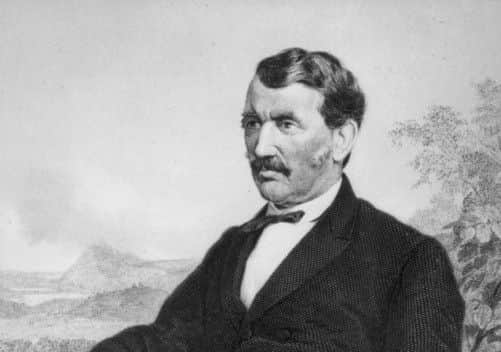Early Africa images to be displayed in Scotland


Little-seen images captured by David Livingstone and a photographer and painted by him on many of his adventures are taking centre-stage in a new exhibition at the National Library of Scotland.
Timed to coincide with the 200th anniversary of the Lanarkshire missionary’s birth, in Blantyre, the displays rarely displayed sketches, paintings, photographs, maps, slides and other materials to reveal what parts of Africa looked like to the first Europeans who gazed upon it.
Advertisement
Hide AdIncluded are Livingstone’s original field diaries with his own sketches and the compass and mapping materials he used to find his way across the unchartered “dark continent.”


The exhibtion recounts the difficulties encountered by photographer John Kirk and artist Thomas Baines, including the transportation of heavy equipment and inhospitable, hot and humid conditions.
Experts at the library, which is hosting the exhibition until 3 November, say that the images collected for Livinstone’s book, Missionary Travels and Researches in South Africa, were key to it becoming a best-seller, shifting more than 70,000 copies, and they went on to be reproduced in newspapers like The Graphic and The Illustrated London News.
They were also copied onto “magic lantern” slides which were used to entertain audiences around the country in geographical and missionary societies, as well as working men’s clubs.
Exhibition curator David McClay said: “This opened Livingstone’s work to a much bigger audience – not just people who could afford to buy expensive books. It helped to make him the star of the day. He had an image as a scientist, missionary and cartographer.
“His journeys were seen as a great patriotic and geographical feat at a time of expanding Empire and when Britain was achieving many things in many spheres.”